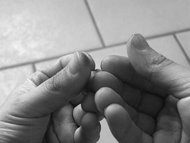 So, I have this buddy named Spike Jones. Pretty smart dude. And in April when we were having lunch a few hours before my workshop, we got talking about the topic of identity.
So, I have this buddy named Spike Jones. Pretty smart dude. And in April when we were having lunch a few hours before my workshop, we got talking about the topic of identity.
“Well, what about you, Scott?” he asked.
“What’s under YOUR fingernails?”
A chill ran down my spine.
Wow. What a question. What a thought. I’ll never forget the feeling of allowing those four words to profoundly penetrate me.
What’s. Under. Your. Fingernails.
So, as I racked my brain, Spike said, “See, the work you do – if it truly matters – becomes a part of you.”
“Like the mechanic who never really loses the oil stains under his fingernails, our work stays with us wherever we go. It becomes a part of our language and our very being. Which isn’t to say work is EVERYTHING. But if your work is your calling – not just your job – you will embrace it in everything you do.”
Holy crap.
Ever since that fateful conversation, I’ve been thinking a lot about my fingernails. And I realize there’s really two ways you can answer that question: literally and metaphorically.
So, here’s what’s (literally) under my fingernails:
1. Metallic bronze dust from the strings on my Taylor 814-CE guitar.
2. Stains of blue Sharpie from hand-writing tens of thousands of nametags.
3. A decade’s worth of chlorine from countless laps of stress-relieving freestyle.
4. Metallic silver residue from daily pounding on the 78 keys on my MacBook Pro.
5. Rainbow cotton fibers from every content note card I’ve ever laid out on the floor.
Next, here’s what’s (metaphorically) under my fingernails:
1. Every email from every random person whose life improved in some way as a result of reading something I wrote.
2. Every email from every random person who told me how stupid I was, or how stupid my idea was.
3. Any of the 5000 creative, penetrating, thought-provoking questions I’ve collected, dissected and incorporated into my lexicon over the years.
– – –
Essentially, this question boils down to a new philosophy, a new paradigm and a new approach to our work. As inspired by Spike’s original post and my hommies @ Brains On Fire:
Work IS play.
That means infusing your childlike energy into everything you do. For the advancement and enhancement of your creative spirit. For the reciprocation of that spirit into the souls of the people you serve.
Work IS pleasure.
That means at the airport ticket counter when the agent asks, “Is this trip business or pleasure?” learning to respond, “Same thing for me!” “Always both!” or “What’s the difference?”
Work IS personal.
That means our technology has made it easy to take the personal-ness for granted. Which is exactly why you need to work so hard at getting personally involved. To prove that a few rounds of golf or some Chamber of Commerce meeting isn’t the extent of your “getting to know you” time with clients.
Work MEANS hitting the streets.
That means getting out of your office and actually talking and listening to the people who (really) pay your salary – the customers. And not in focus groups, online surveys or some other form of contrived, unrealistic cross-section of people you THINK speak for the entire group. We’re talking about real-life, face-to-face, organic human inquiry, conversation and connection. Something that doesn’t have a structure, agenda or regimented time limit.
Work MEANS getting your hands dirty.
That means becoming involved (even if it’s just a little) in the production, manufacturing, research, exploration and baseline development of your company’s ideas. Getting your butt out of the office and into the warehouse.
Work MEANS engaging face-to-face with customers.
That means hanging with them. Learning their language. Drinking their Kool-Aid. Watching them in action as they gain value from your product or service so you can more accurately report back on the posture of the masses.
LET ME ASK YA THIS…
What’s under your fingernails?
LET ME SUGGEST THIS…
For my list called, “72 Superb Songs on Under Scott’s Fingernails,” send an email to me, and I’ll send you the list for free!
* * * *
Scott Ginsberg
That Guy with the Nametag
[email protected]
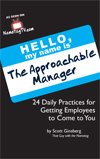 If they can’t come UP to you; how will they ever get BEHIND you?
If they can’t come UP to you; how will they ever get BEHIND you?
Buy Scott’s new book and learn daily practices for becoming a more approachable manager!
Pick up your copy (or a case!) right here.

 Imagine you’re a prehistoric hunter.
Imagine you’re a prehistoric hunter.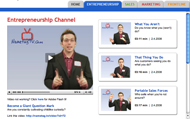
 In March of 2005, I set up my
In March of 2005, I set up my  Training videos putting your office to sleep?
Training videos putting your office to sleep?
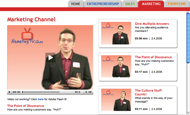 Do you have MARKET share or MIND share?
Do you have MARKET share or MIND share?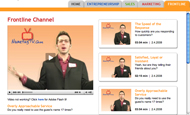 Want your customers and guests to be INSISTENT?
Want your customers and guests to be INSISTENT?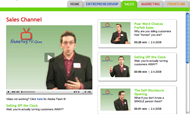 Ready to enable customers to BUY?
Ready to enable customers to BUY?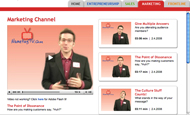 Want to get people buzzing about YOU?
Want to get people buzzing about YOU?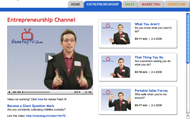 Growing your small business
Growing your small business Still bummed out about the Writer’s Strike?
Still bummed out about the Writer’s Strike?

 Practices, THEN principles.
Practices, THEN principles. 15 to 30 billion.
15 to 30 billion.  Enjoy this post?
Enjoy this post?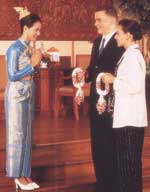 1. Answer in advance. Make a list of the 101 most frequently asked questions your customers. Write a short answer for each one (no more than one paragraph). Then give away that little booklet FOR FREE to every single person who walks in your door. (You could also make this into a CD, audiocassette or podcast.)
1. Answer in advance. Make a list of the 101 most frequently asked questions your customers. Write a short answer for each one (no more than one paragraph). Then give away that little booklet FOR FREE to every single person who walks in your door. (You could also make this into a CD, audiocassette or podcast.) Are you the luckiest person you know?
Are you the luckiest person you know?